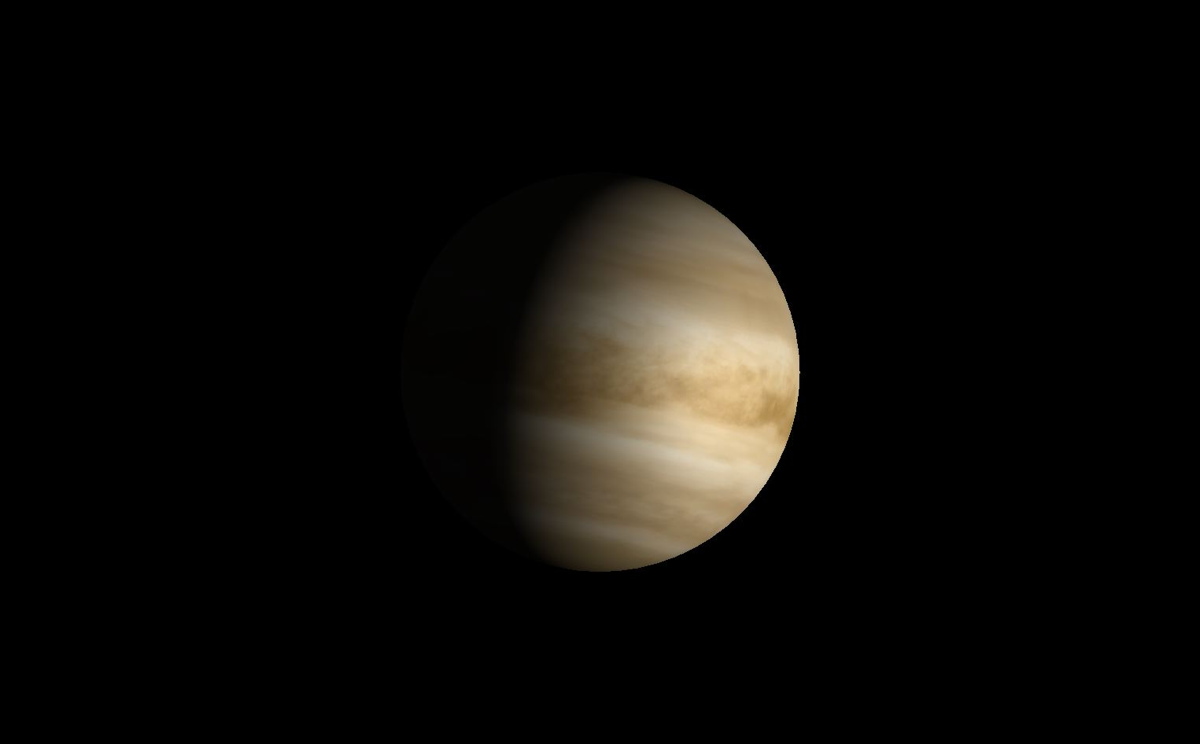
Skywatchers around the world can look forward to spotting bright planets throughout April, but they'll need to know where to look.
Dazzling Venus continues to climb higher in the Western sky during April, and by month's end, the brilliant planet will not set until late in the evening. Jupiter is not quite as brilliant as Venus, but it's visible into the after-midnight hours and is a great target to look at even in a small telescope.
Saturn, rising progressively earlier, is visible in the late evening hours low in the East-Southeast and is at its best by dawn. During the final week of April, like two ships passing in the evening twilight, Mars drops into the sunset fires and fades from view, while Mercury, shining nearly with the brightness of the brightest star, becomes evident at dusk. [10 Skywatching Events in 2015]
Check out our schedule below to see what's worth looking for in April.
Saturn — Saturn is becoming more prominent as the date of its opposition to the sun (May 22) looms closer. Appearing as a very bright (magnitude 0.3) yellowish-white "star" shining with a steady, sedate glow, it rises above the East-Southeast horizon soon after 11 p.m. local daylight time on April 7 and stands due south by around 5 a.m. the following day. Late that evening, you will find it positioned 5 degrees below, and a bit to the left of, the waning gibbous moon. A telescope with magnifying 30 power or more will readily reveal the famous ring system whose northern face is now tilted nearly 25 degrees to our line of sight. (Your fist held at arm's length against the sky covers about 10 degrees.)
Mercury — The closest planet to the sun is in superior conjunction on April 10, meaning that it is on the far side of the star as seen from Earth, effectively making it lost to our view in the solar glare. But within a couple of weeks, this rocky little world will vault to its best evening viewing apparition for 2015. On April 30, Mercury will pass within a degree to the lower left of the Pleiades (also known as the "Seven Sisters"). Look low to the West-Northwest horizon about an hour after sunset to see this sight. Binoculars will help you see the Pleiades against the twilight sky.
Venus — On April 11, take note of Venus passing a couple of degrees to the lower left of the famous Pleiades star cluster in Taurus. Then, on April 21, Venus and a slender crescent moon will make for an eye-catching sight when they appear about 7 degrees from each other. Venus is becoming increasingly spectacular in the evening sky. Look for it blazing in the West during and after twilight. Setting on average 2 minutes later each night, this dazzling world (magnitude minus 4.1) is now venturing into seldom-seen territory: the late-night sky. We are usually accustomed to having Venus set much earlier in the evening, but by the end of April, Venus will be setting within a half hour of midnight. Through a telescope, the disk of Venus will appear as a gibbous phase, 71 percent illuminated.
Get the Space.com Newsletter
Breaking space news, the latest updates on rocket launches, skywatching events and more!
Mars — About 45 minutes after sunset on April 22, look low toward the West-Northwest horizon, and you'll see a brilliant "star" shining with an ochre hue. That will be Mercury, which, at magnitude minus 1.2, is nearly a match for Sirius, the brightest star in the sky. Just 1.3 degrees to its lower right is Mars, which, at magnitude 1.4, shines only 1/11 as bright as Mercury. Against the twilight sky, you'll probably need binoculars to pick it up.
Jupiter— Nearly two-thirds of the way up from the South-Southwest horizon as darkness falls on April 26, you will see the moon, and about 8 degrees above and to its right, you'll find Jupiter. The "king of the planets" is rivaled only by the moon and Venus, and even though it does lose some luster (from magnitude minus 2.3 to minus 2.1) and its apparent width shrinks by about 8.5 percent in April, this planet continues to be a grand sight for both naked-eye and telescopic observers to behold.
Editor's note: If you have an amazing skywatching photo you'd like to share for a possible story or image gallery, please contact managing editor Tariq Malik at spacephotos@space.com.
Joe Rao serves as an instructor and guest lecturer at New York's Hayden Planetarium. He writes about astronomy for Natural History magazine, the Farmer's Almanac and other publications and he is also an on-camera meteorologist for News 12 Westchester, New York. Follow us @Spacedotcom, Facebook and Google+. Original article on Space.com.
Join our Space Forums to keep talking space on the latest missions, night sky and more! And if you have a news tip, correction or comment, let us know at: community@space.com.

Joe Rao is Space.com's skywatching columnist, as well as a veteran meteorologist and eclipse chaser who also serves as an instructor and guest lecturer at New York's Hayden Planetarium. He writes about astronomy for Natural History magazine, Sky & Telescope and other publications. Joe is an 8-time Emmy-nominated meteorologist who served the Putnam Valley region of New York for over 21 years. You can find him on Twitter and YouTube tracking lunar and solar eclipses, meteor showers and more. To find out Joe's latest project, visit him on Twitter.









